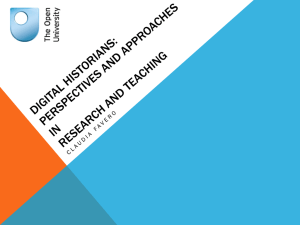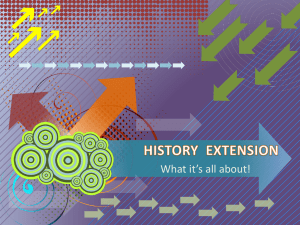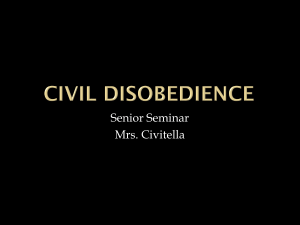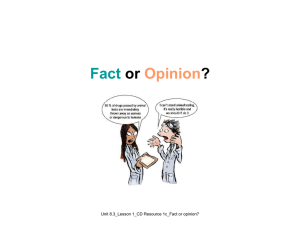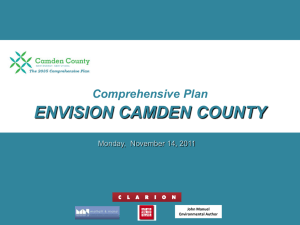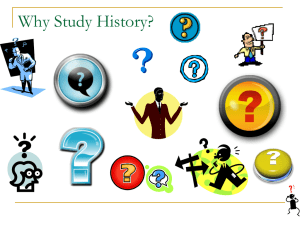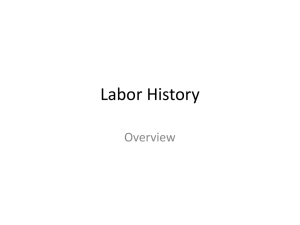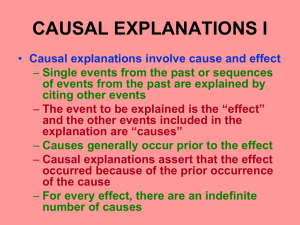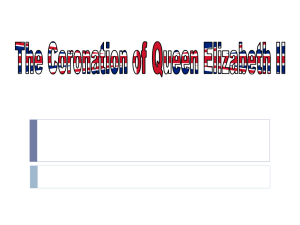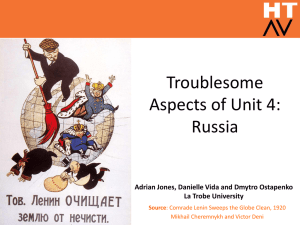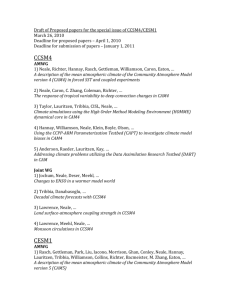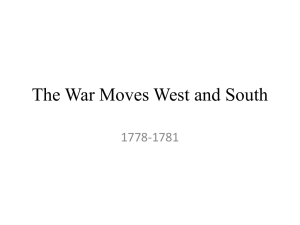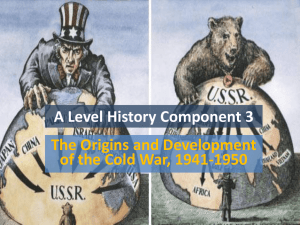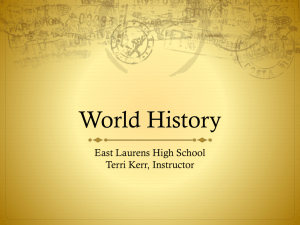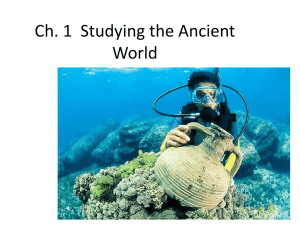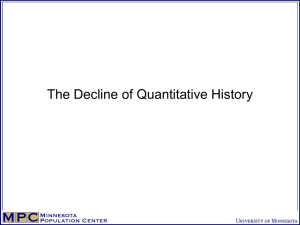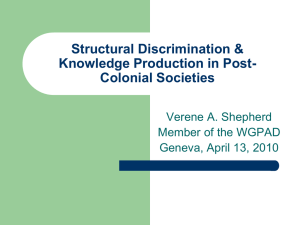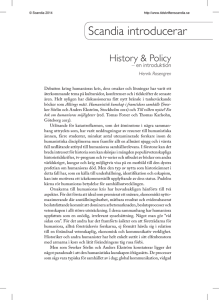Elizabeth revision
advertisement
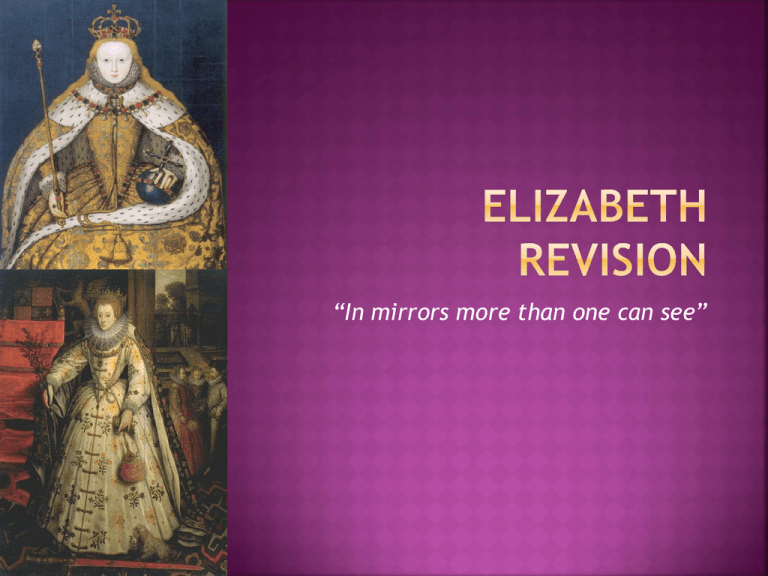
“In mirrors more than one can see” “Elizabeth Tudor remains an enigma despite the intense historiographical tradition. In part this can be explained by the relative silence of Elizabeth’s own voice in a medieval, patriarchal society. Where there is scant evidence there is always endless debate. Each generation redefines Elizabeth according to the types of evidence they select , their own personal and historical context and the needs of the society in which they write.” Some really smart person Not just CAMDEN- A History of the most renowned and Glorious Princess Elizabeth SPENCER- The Fairie Queen AYLMER ? An harborowe for faithful and trewe subiectes WOMAN LED BY HER Calculating COUNCIL And Shrewd negotiator ELIZABETH Gloriana Naive But lucky Queen Pressured By puritans Indecisive On marriage Seductress In court All of these images are static, implying that these were defining features throughout her reign. A more rational view would be that Elizabeth learned quickly and evolved as a Queen and leader despite Camden’s claim of “Semper Aedeum.” This is one of the reasons for constant debate in that they assume a static quality. It largely depends what period the Historian is looking at. •PURPOSE •AUDIENCE •EVIDENCE •IDEOLOGICAL VIEW OF HISTORY • CONTEXT OF HISTORIANS Constructions of Elizabeth’s identities and gender; Neale, Elton, Haigh, Basnett Doran, Strong Walker Political and Administrative Leadership; Camden, Neale, Elton, Haigh, Basnett, Mears Religious beliefs and policies; Camden, Lingard, Neale Elton Haigh Basnett PURPOSE- MODERNIST/POST MODERNIST STRETCH “Camden “Mine own judgement I have not delivered by affection; whilest writing with an undistempered minde, I have rather sifted out the judgement of others, and scarcely have interposed mine owne in any place “History of the Most Glorious and Renowned Princess Elizabeth a golden queen tending her people in a golden age.” J E Neale “ honest and considered judgments based upon careful study of the original authorities.” “This biography has been written for a particular occasion and a particular public.” ( 4th centenary of Queen Elizabeth’s birth) 1933 Julia Walker “What we seek to illuminate, however, is another, darker discourse, the less famous discourse of disrespect and dissent which also existed from Elizabeth's troubled days as a princess and into the decades after her Narrow Male Elite literate Wider audie nce HISTORIANS WORK AUDIENCE Camden The History of the Most renowned and Glorious Princess Elizabeth Those literate English class living under Stuart rule Neale Elizabeth Admirers of Elizabeth 11 ELTON Academics studying Tudor Politics Basnett Feminists Haigh Anti Feminists NEW HISTORICISTS Those who seek to hear a different voice HISTORIAN EVIDENCE CAMDEN BURGHLEY PAPERS, ACTS OF PARLIAMENT, SPEECHES NEALE CAMDEN WITH FOOTNOTES/PAMPHLETTS FOR PURITAN CHOIR ELTON STRUCTURALIST HEAVY FOCUS ON PRIVY COUNCIL PAPERS HAIGH All of the above plus AMBASSADORIAL REPORTS STRONG PORTRAITURE BASNETT Elizabeths own prayers and letters WALKER NEW HISTORICIST Any negative image-Tomb sculpture, HISTORIAN CONSTRUCTION CAMDEN ANNALES NEALE BIOGRAPHY ELTON STRUCTURAL ANALYSES HAIGH/BASNETT BIOGRAPHY /DORAN STRONG CHRONOLOGY BUT LIMITED SCOPE OF PORTRAITURE MEARS POST MODERN FOCUS ON DISCOURSE BETWEEN COURT AND REALM- NON LINEAR ,ANALYSES Camden Influenced by Tacitus- qualities of good leader Black and white/ good or bad Truth focussed Modernists NEALE/ELTON Truth achieved through empirical method- acknowledge documents as authoritorial evidence Post Modernists Everyone else All perspectives valid Sources evidence can be anything. New Historicists particularly rely on cultural meaning. They reason that cultural texts, eg plays and poems rise above the bias of document since they reflect collective attitudes. CAMDEN NEALE ELTON ELTON MEARS HAIGH BASNETT STRONG HACKETT Elizabeth left no cipher with which to unlock the secret of her personality, no diary, no memoirs, and almost no private letters. What has survived is an occasional intimate postscript to public letters generally drafted by the principal secretaries of state, a number of magnificent official speeches, a handful of poems of somewhat doubtful authenticity, an occasional prayer and an avalanche of sayings, witticisms and episodes, treasured (but often fabricated) by those who watched and recorded her every action. Where there is scanty evidence, there is endless debate. Historians shed light on the past but that light can only reveal a partial, dimly-lit view. Assess the relevance of this statement as it applies to at least ONE area of debate from your chosen case study. -2008 Although generic in nature, the question required a sustained, sophisticated and critical assessment of why and how historians’ perspectives of the past are essentially limited. The quotation contained in the question provided a clear discriminator because it required candidates to apply the statementto at least one area of debate in their chosen Case Study. Candidates must engage with the statement and integrate their analysis into the substance of their response. Better responses used a range of historians within their argument. These historians were drawn from a significant time period and enabled candidates to make insightful observations about the ongoing nature of the debates. These responses evaluated how and why history is only a partial representation of the past, providing a consideration of the historian’s methodology as well as his purpose and context. Candidates are reminded that a limited range of historians limits the possibility of developing an argument that would allow them to make critical judgements about historical interpretation. Responses which developed around the context, methodologies and perspectives of a range of historians were able to deal effectively with the focus of this question. Weaker responses tended to describe the different viewpoints of the historians rather than critically evaluate how and why those perspectives were limited. Using a single source or a textbook style summary of the debate limits the response to a survey-style narrative. To what extent does Dening’s statement explain the changing interpretations in at least ONE area of debate from your chosen case study? 2009 Candidates needed to engage with the statement and integrate their analysis into the substance of their response. Better responses drew on the work of a range of historians from a significant time period and made insightful observations about the ongoing nature of the debates. These responses evaluated how and why interpretations of history change over time, and provided a consideration of the historian’s methodology as well as his or her purpose and context. Candidates are reminded that studying a limited range of historians restricts the possibility of their developing an argument that would allow them to critically judge changing historical interpretation. Responses that were developed around the context, methodologies and perspectives of a range of historians dealt effectively with the focus of this question
